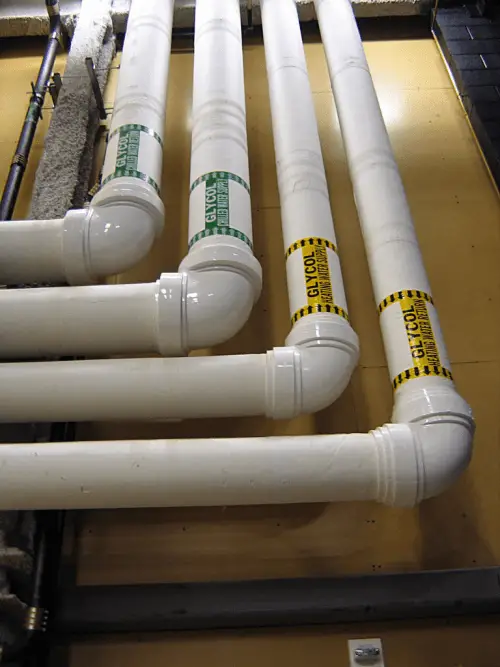When it comes to residential or commercial structures, it is important to consider using the right kinds of pipe. This would ensure the versatility and durability of pipes in terms of long-term plumbing. There are two popular modern alternative pipes; namely the PVC pipe and the CPVC pipe. These pipes are both made of thermoplastic material and are used as common replacements for metal piping.
In this article, you’ll learn more about each type, to help you ascertain which one is best for your home or office building.
Summary Table
| PVC Pipe | CPVC Pipe |
| Can only handle temperatures up to 140 degrees Fahrenheit | Able to handle a much wider range of temperatures, up to 200 degrees Fahrenheit |
| Cheaper pipe | More expensive type of pipe |
| More commonly used in home construction | More commonly used in commercial structures |
Definitions

PVC pipes are thermoplastic polymers widely used as an alternative to metal piping. They are made of polyvinyl chloride, a type of thermoplastic material which can be molded into various shapes. PVCs are popular for their durability, easy installation, and low price.
They are commonly used in residential structures. PVC pipes can handle temperatures up to 140 degrees Fahrenheit.

CPVC pipes are made of thermoplastic materials, specifically chlorinated polyvinyl chloride. CPVCs are known for their strength, durability, and versatility in plumbing systems. CPVC pipes can withstand a wide range of temperatures, even up to 200 degrees Fahrenheit. Because of this feature, most building codes require the use of CPVC pipes.
PVC Pipe vs CPVC Pipe
The main difference between a PVC pipe and a CPVC pipe is in the material composition. Both pipes are made of the same material (polyvinyl chloride) but the CPVC pipe is the chlorinated version.
CPVC’s are altered by a free radical chlorination reaction which increases the chlorine content of the pipe.
Both pipes are made of thermoplastic materials. PVC pipes, however, can only handle temperatures up to 140 degrees Fahrenheit. CPVC pipes, on the other hand, can withstand temperatures up to 200 degrees Fahrenheit, making it the more versatile option.
PVCs and CPVCs are made of materials that can be molded into different shapes to create pipes, fittings, valves, and other supplies that can handle liquid.
Both PVC and CPVC pipes can be used for varied applications but CPVC’s are more commonly used for industrial liquid handling as they offer greater strength and flexibility.
PVC pipes are the more cost-efficient option.
Nevertheless, the higher cost of CPVC pipes is justified by their ability to handle higher temperatures and more chemicals, still making them a viable and astute option.





